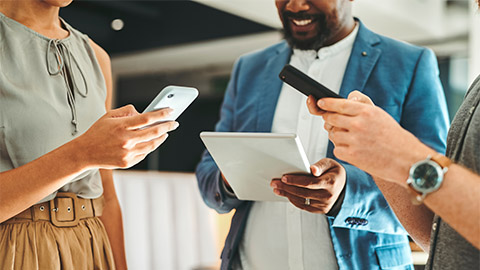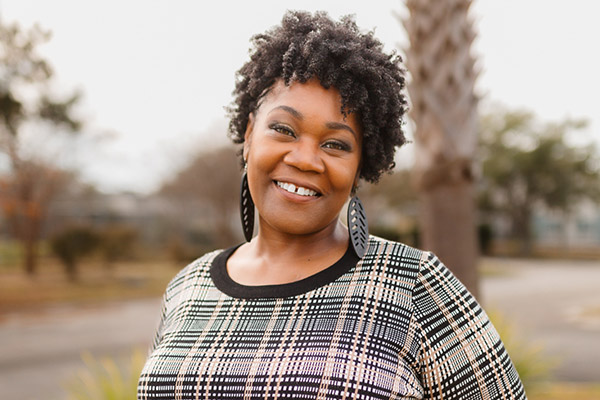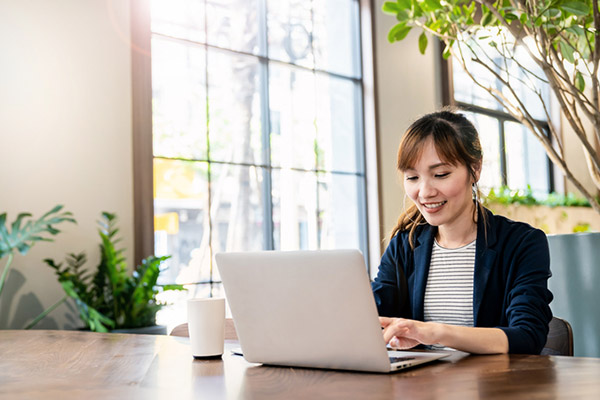09/12/2023

With the widespread use of smartphones, many people spend extended periods looking down at their screens. How does prolonged forward neck tilt associated with smartphone use contribute to issues like “tech neck?” In this episode of The ABMP Podcast, Kristin and Darren speak with David Lesondak about how smartphones affect the biomechanics of neck tilt, possible age-related factors, and ergonomic considerations people can take to avoid excessive smartphone-related neck tilt.


Anatomy Trains: www.anatomytrains.com
Touch America: www.touchamerica.com
Zibby Media: www.zibbymedia.com
Anatomy Trains is a global leader in online anatomy education and also provides in-classroom certification programs for structural integration in the US, Canada, Australia, Europe, Japan, and China, as well as fresh-tissue cadaver dissection labs and weekend courses. The work of Anatomy Trains originated with founder Tom Myers, who mapped the human body into 13 myofascial meridians in his original book, currently in its fourth edition and translated into 12 languages. The principles of Anatomy Trains are used by osteopaths, physical therapists, bodyworkers, massage therapists, personal trainers, yoga, Pilates, Gyrotonics, and other body-minded manual therapists and movement professionals. Anatomy Trains inspires these practitioners to work with holistic anatomy in treating system-wide patterns to provide improved client outcomes in terms of structure and function.
Website: anatomytrains.com
Email: info@anatomytrains.com
Facebook: facebook.com/AnatomyTrains
Instagram: www.instagram.com/anatomytrainsofficial
YouTube: https://www.youtube.com/channel/UC2g6TOEFrX4b-CigknssKHA
Zibby Media is a women-led company dedicated to deepening the connections between readers, authors, and each other. We do so by offering many ways to connect—even for those who don’t have time to read. Founded by Zibby Owens, author, podcaster, publisher, bookstore owner, CEO, and mother of four, Zibby Media includes a publishing house, a magazine, podcasts, retreats, classes, a book club, salon events, and an independent bookstore with frequent author events. If you have ever loved a book, you’re in the right place.
Learn more at zibbymedia.com
Follow us on instagram: https://www.instagram.com/zibbybooks/?hl=en
Listen to the podcast @momsdonthavetimetoreadbooks
Read the magazine @zibbymag
TouchAmerica is a leading manufacturer of professional grade wellness furniture, bodywork tables, halotherapy suites, hydrotherapy equipment, sound bathing loungers, and other related products. At TouchAmerica, we believe in a future where good health and vitality are common in all aspects of living. Promoting the positive power of conscious touch is at the core of our vision. We hope our products help add a touch of functional elegance to your massage & spa work environment. ABMP members receive 20% off all standard products. Discounts do not apply to salt or special-order SKUs.
Visit https://www.touchamerica.com/ or Call 800 67 TOUCH and use code touchABMP*.
Reach out today and feel the TouchAmerica difference!
0:00:00.0 Kristen Coverly: Are you a massage or bodywork practitioner who's interested in equipment or amenities for your business? Touch America wants to save you money while providing quality equipment backed by personalized customer service from our family-owned company in North Carolina. Touch America offers a full line up of treatment tables to go along with halotherapy design and supplies, Shirodhara kits, speakerless sound equipment, relaxation lounges and more. Receive a 20% discount at touchamerica.com by applying your ABMP member discount code found on abmp.com/discounts. Visit touchamerica.com today.
0:00:50.4 Darren Buford: I'm Darren Buford.
0:00:52.3 KC: And I'm Kristen Coverly.
0:00:52.4 DB: And welcome to the ABMP podcast, a podcast where we speak with a massage and bodywork profession. Our guest today is David Lesondak, David is the author of the international best-seller, Fascia: What It Is and Why It Matters, currently in nine languages, his follow-up book as editor, Fascia, Function and Medical Applications was nominated for 2021 British Medical Association Award. In addition to contributing chapters to numerous other publications, he hosts the podcast, BodyTalk with David Lesondak, learn more at davidlesondak.com. Hello, David and Hello Kristen.
0:01:29.2 David Lesondak: Hi, it's great to be here. Thanks for inviting me back. It's been a while.
0:01:32.8 KC: Hello, David, we are so excited to have you back and to talk to you about today's topic, Smartphone, Dumb Biomechanics. So we're gonna jump right in. So as we know, smartphones widespread, everybody has one, and we spend extended periods of time looking down at their screens, and so curious, how does prolonged forward neck tilt associated with using those smartphones, those darn helpful machines that we need to use to get through our day, contribute to issues like tech neck.
0:02:07.4 DL: Okay, that's a big... That's a lot, that's a lot. So we're gonna need to break this down a little bit 'cause I guess smartphones are the new sitting, which is the old smoking.
[laughter]
0:02:18.3 DL: Which is another way to think about it. And it's about more than just head forward. Okay, 'cause it's because... Are you standing when you use your phone, are you sitting when you use your phone, you see a lot of people standing around on street corners, at least I do when I'm standing around on street corners. And their whole body is involved in it. Including their hips, including their legs, it actually was something that came to me as a revelation with a particular person that I was treating that wasn't getting the results that I thought they should get. And they left after maybe their second or third treatment, and I happened to see them at the other end of the hallway where the window is where they check out and reschedule and things, and they were looking at their phone and I was looking at their whole body and it looked like kind like a Jacob's Ladder of, this is torted, this is torted, the other things torted, the other things torted.
0:03:11.5 DL: And it just gave me a whole new picture into what he was doing when he wasn't in the office that I didn't have otherwise. So that kind of said, Oh, I need to develop a course, and the title came from a medical conference, and I thought, Well, how do I get some attention, and that's where the Smartphone Dumb Biomechanics came from, 'cause don't blame yourself for having dumb biomechanics, the phone kind of forces it on us along with the head tilt forward, okay. Which we all know about that, and that's really going to lock long our posterior scalenes in particular, and it's gonna lock short our anterior scalenes, which is gonna pull up on the first and second ribs, and along with that head tilt forward and you are listening at home right now, pick up your phone and follow along with me, unless you're driving, don't do that, unless you're at a red light, but still don't do that, 'cause we look at our phones when we're at a red light, why, it's fine. It'll be fine for 10 more minutes. So anyway, not only are you looking down, but you're holding something, your arms are close in, your elbows are bent at possibly 90 degrees or more than 90 degrees, and there is almost a reflexive extension in the thoracic spine, the sternum comes in the back rounds a little bit, so that you can have this more closed in posture to look at this thing.
0:04:43.2 DL: Now, it's okay, if you're doing it from time to time throughout the day, it's another thing, if you sit there for an hour when somebody canceled on you and you're not sure what else to do, so oh, I'm just gonna go see what's happening in the world and see what's happening in my screen world and just kind of very unconsciously and self-reflexively relax into that posture, and the other thing I wanna mention for the people who like to stand, 'cause this is what I've noticed in multiple people ever since I saw it the first time, was that when you're standing and looking at your phone, I think you tend to tilt the head forward even more 'cause you hold your phone a little further away, but there is a hyperextension, there's a locking back of the knees, that happens to stabilize the lower body, and then over time, that can shorten the tibialis anterior, the shin muscles, so that's part of the pattern that has to be taken into account too. So it's more than... More than just the head. And the other big thing that concerns me, and it should concern everybody listening to this podcast right now, is it's also the shortening of in Anatomy Trains language, the Deep Front Arm Line, so as I mentioned about having the elbows bent, I'm looking at my phone, I'm using my thumbs.
0:06:00.4 DL: So there is the flexors, there is the fascial connections through the elbow to the biceps, the medial inter-muscular septum going up into the little hook in the profound surface of the scapula, the coracoid process where the pec minor oh, that felt good I just for those of you listening at home I just rubbed my coracoid process, I was like, Oh, I needed that. But remember that the pec minor, underneath the pec major comes up and attaches to the coracoid process, which then forms a tensional relationship with the bicep and the two underlying muscles of the bicep, and if you do that a lot, that can become shortened and tightened, and that can lead to thoracic outlet-like symptoms and also reinforce that tightness and that shortening of the area around the sternum.
0:06:52.3 DL: The ribs and so on and so forth, so it's... We're looking at about a potentially 16-part ensemble here, that if you're having somebody who, let's say is coming to you with thoracic outlet types or just any kind of tingling or buzzing in their hands 'cause it could be cubital, it could be thoracic, or it could be carpal, right, you need to be looking at that whole chain and you need to be asking them some tough questions like, "How much time do you spend on your phone? Are you a computer jockey and then you go home and relax on your phone for two hours, maybe something about that needs to change."
0:07:24.0 DB: Maybe you've already adressed it here at David, but I'm kind of curious, you're mentioning standing, you're mentioning sitting, but I have the terrible habit also of doing it lying down.
0:07:34.5 DL: I have trouble doing that because I feel it in my arms when I do that.
0:07:39.7 DB: Oh yeah.
0:07:40.3 DL: I'm gonna roll to my side and kinda do the side swipe, but any more I am really trying to get into the habit of when I go to bed, I'm going to bed and my phone is gonna be... If I'm using it as an alarm clock, which moreso is a habit I'm trying to break, but if it's a morning where I'm not worried, like I have to be up at the crack of 6:00 AM, I just don't even take it into the bedroom, I'm really trying into the habit of leaving it outside so that I don't do that. I don't have a good recommendation for you there Darren. I really don't.
0:08:08.6 KC: Oh I do.
0:08:12.1 DL: Okay go for it, go for it.
0:08:12.2 KC: Oh yeah. This is a great little product just for you, buddy, so when my stepdad had surgery and he couldn't move his neck for a while and he loves to read, so he couldn't look down to read his book, I bought him these glasses on Amazon where he could lay flat and put these little glasses on and they mirrored in, so he could hold the book at his belly and he could perfectly read the book with these little reflective glasses.
0:08:38.4 DL: Woah.
0:08:40.4 KC: I mean, problem solved.
0:08:40.5 DB: It's like an anti-periscope periscope.
0:08:44.8 KC: Exactly right, exactly right.
0:08:45.1 DB: That's great.
0:08:46.8 DL: That's awesome. Is there gonna be a link to that in the show-notes cause I think I need one of those.
0:08:50.5 KC: Well let me work out my deal first, my referral percentage.
0:08:54.0 DB: Not a sponsor.
0:09:00.6 DL: Okay, we are not endorsing this product everybody. Just wanna be clear.
0:09:02.1 DB: Definitely not. Hey David before we go any further about proper biomechanics, which is I think we'll probably address here in a second, let me just address something that's come up before where the readers of Massage and Bodywork, when we've addressed this topic and they politely have said to us, editors, we're gonna call BS on this because we... People have been reading books for a very long time, and that has the same effect of looking down and holding the neck in one space, so how might that be different than a cellphone.
0:09:40.4 DL: That is a really, really good question. Let me grab a book and I will show you.
0:09:42.5 DB: Oh, perfect, okay. We have a book.
0:09:42.6 DL: Okay so... Yeah and it's a heavy book too, 'cause you know when you were talking about laying on your back and scrolling through the phone, and I was thinking about trying to find a comfortable position, reading in bed, which usually involves five or six pillows, let's be honest and sitting up more, but I had that thought and here's my ISBS, which is informed speculative BS answer to that. Okay, so the phone has weight, the book has weight. Okay I could argue that depending on the book, the book is probably gonna be heavier than the phone. The phone is... Okay, my phone is about 2 1/2 inches. So 5-6 centimeters wide by 5 inches 10 centimeters long, my books a lot bigger than that. Okay, so I'm gonna call surface area and body mechanics, so if I'm holding a book with my left hand, I don't hold my thumbs in the center of the break in the book and hold it the way I hold my phone, which closes down the arm line and the chest that I mentioned.
0:10:49.3 DL: I'm gonna hold it broader, which keeps my chest more open and more wide, and if I'm looking at a big art book. It's even wider than that. Right, but that's a pretty specific incident, so I'm gonna say that yes, your head is... Your head is forward, but you're also scrolling down... Okay, your text is a lot longer and it's a lot, it's a lot wider from left to right, and it's a lot longer from top to bottom, so if I'm reading down this page, my head is gonna be moving a little bit as I go from left to right and up and down on the page, and from the left side of the page to the right side of the page, your phone does not have a left side and right side, it has one side and you keep... You keep swiping up the finger and scrolling down, your head moves a lot more when you read a standard book and your posture is broader through the arms and the chest when you read a normal book. And that's my story and I'm sticking to it.
0:11:48.5 KC: And that's an excellent ISBS story and actually really great valid points, and we don't see as many people standing on street corners reading books, so let's get...
0:11:57.3 DB: Oh, oh, the 1800s, where are they.
0:12:03.1 KC: I know right. All right.
0:12:05.1 DL: Hey, my neighborhood we would sit around and read Proust and Kerouac and have clove cigarettes.
0:12:11.7 KC: That's right, let's take a short break to hear a word from our sponsors, Anatomy Trains is excited to be back in person in the lab with Anatomy Trains, author Tom Myers and master dissector Todd Garcia at the Laboratories for Anatomical Enlightenment in Boulder, Colorado. Join us for a new four-day in-person fascial dissection intensive October 24-27, 2023, where you'll have the unique opportunity to see in the most natural conditions possible and dissect for yourself what's under the skin. Visit anatomytrains.com for details.
0:12:54.3 KC: Zibby Books is thrilled to bring you Super Bloom by Megan Tady, an award-winning novel about a massage therapist and her colleagues who decide to rewrite their story, when Joan meets a difficult client with an interesting proposal, she goes undercover at a Vermont spa to call fun informative details about the experience, for anyone who has ever been in a massage room, Super Bloom will delight and entertain you. Learn more at zibbymedia.com. Let's get back to our conversation. Okay, David, so obviously we're not getting rid of smart phones any time soon, as I mentioned at the beginning.
0:13:39.9 DL: No we're not.
0:13:40.8 KC: They're part of our daily lives, they're very helpful as destructive sometimes they can be. So what other recommendations, what can people do in the way they're holding them, the angle, all those things to help mitigate some of these tech neck symptoms.
0:13:54.9 DL: You know, I was thinking about that before we got together, 'cause I assumed you're gonna ask a question like that. I think it's about using your smartphone wisely and being as hands-free as possible, so remember that this device can do a lot of different things, so let's talk about the most practical thing, first I have... My wife actually, she loves to do the spelling bee on The New York Times.
0:14:23.1 KC: Same.
0:14:25.2 DL: Okay. And she is a software automator and database developer, so she's serious tech person, so at my behest we found this little thing that glues on to the back of the phone that pops out of the back that makes like a portable little... The word I'm stuck on is frame, but it basically gives us support for it, so it's about more than a 45 degree angle, but less than a 90 degree angle, so it can sit there on the table at the height that she wants it at, she can play your game punch your words in and she could spend a half hour, 45 minutes like that, and it's not the same strain on her shoulders, arms and neck as it would be if she had it close to her and was like sitting with her back rounded in her lap.
0:15:10.0 DL: Okay, so that's number one, is get one of these little gizmos there. I use one myself, from time to time, particularly if I'm watching a video or something, and the other one is, start getting smarter about how you use voice commands, so there's a lot that you can do with this phone that you don't have to do with your fingers, and I would love it if some of the manufacturers got a little better about the voice recognition software of their apps, so for example, I find that the Siri can sometimes be an unreliable translator, okay. Just calling you out Siri.
0:15:51.9 DB: What.
0:15:52.5 DL: You're not always doing it for me, but you know who does have excellent voice recognition software is Gmail. So if I'm looking at Gmail, and my mail during the day, when I'm treating people, I try to just kinda keep a monitor on what's going on in case I've got some pertinent writery or editory business, you may know something about that Darren, but what I will do instead of writing back is I will actually voice text right on the Gmail and it'll be like Darren comma, new paragraph, blah, blah, blah, blah, blah, blah, period, new paragraph and I gotta tell you, 99% of the time it's error-free, as long as I put in the punctuation and the new paragraph command, it's there, I can get you what you need quickly. It is shorter than if I used my fingers and it saves me time looking down at the phone and using my thumbs or using my fingers, so that's a habit that I've gotten into it, that I find really, really, really makes a difference.
0:16:51.7 DB: David, let me ask you, I'm sure listeners are kinda curious, is there any difference with tech neck and younger versus older adults using smartphones?
0:17:01.5 DL: That's a question that I don't have enough experience to answer. Developmentally, that is really, really intriguing to me, and I'm gonna take a little bit of a detour here, but I'm thinking about the... What sometimes I've heard to is the one sport injury that we're seeing in 12 to 16-year-olds where they shuttle them into, this is your sport, you do that one sport all year round, and they're having orthopedic problems that the 12 to 16 and 18-year-old should never have, because they're not getting enough variation in their movement diet, so you're having me wonder about... Okay, these kids who are on the phone all the time. How has that affected them developmentally. Now, I have seen some younger 20-somethings that when I ask them to sit, okay, and I need to explain here, so when I'm doing back work on the erector spinae and sometimes some of the paraspinals, I've got people sitting on a bench with an adjustable seat, and I am working down the back, from the shoulders down towards the sacrum while they're in active flexion and extension.
0:18:08.8 DL: Okay, it's a Rolfing Structural Integration type of technique, and I will see people sit on the bench and they reflexively sit into that slump posture, so I don't know that it's creating a irrevocable orthopedic thing, but it's starting to become the default mode in sitting or I should say it's my concern, this becoming the default mode in sitting, and I think parents who are listening right now should be kind of watching their kids to see, "Okay, are you sitting like that even when you're not on your phone?" And if you're sitting in a complete way, let's just... Okay, so my head is down, but if I round my spine back and I also bring my sitz bones more forward towards my knees, so I've got from the head all the way down the spine, all the way through my pelvis into my tailbone, my whole body is involved in that posture, I would submit that, okay, that might not be an ideal way to sit for an hour or two hours, but at least my whole body is integrated into it, than opposed just letting my head hang off of my shoulders. So that's another thing to look to is how is the whole body fitting into the pattern.
0:19:15.7 KC: Side note kudos to the term movement diet, I love that so much.
0:19:20.1 DL: It's the title of my upcoming book, The Movement Diet. Somebody's gonna steal that, I know it, and its fine.
0:19:25.9 DB: Yeah, it's out there. You just put it out there.
0:19:27.6 KC: Let me just get...
0:19:28.2 DL: Thank you Kristin I appreciate that.
0:19:30.7 KC: I'm just buying that you are... Now hold on, hold please.
[laughter]
0:19:34.6 DL: Movementdiet.com go ahead register it.
0:19:39.4 KC: Okay, David, let's start talking about some strategies, we talked a lot about what's happening, what's occurring in the body to create the symptoms, what muscles are involved, so now let's start talking about what are some steps, some exercises or strategies we can use as individuals and with our clients, to help alleviate some of that neck strain.
0:19:55.0 DL: If you're dealing with somebody who has really recalcitrant tech neck, one of the things I do is I actually teach them how to do basic trigger point work on their anterior scalenes, and I just show them how to find their collarbone, walk their fingers up and over don't press so much that they cut off their circulation, but just have them maintain a little firm, steady pressure there and slowly move their head back and forth and around, so they get the idea of, "Oh, when I tilt this way, I feel this or when I move back, I feel that as opposed to, I gotta dig in there and work it out, it's just some nice day pressure and move your head around instead, and again, that gives them something new in their movement diet. The overall full body one that I like to use is in some yoga circles, I believe it's called cow face, don't know why, but basically, for those of you listening at home and not driving, take your right hand and reach around to the back of your right shoulder blade, and then with your left hand, put it behind you and reach up towards your right hand.
0:20:57.9 DL: Now, I don't care if your hands ever touch or not, and I'm not gonna say get a towel so you can maintain the tension, but what I wanna do is I wanna create a scenario where I'm opening the right side of my shoulder and my chest, and I'm also opening from the right shoulder girdle down through the chest to the opposite hip, through the abdomen, so that is gonna open up everything that I just spent the last hour kind of making re-forcibly go into a flexion position, and then of course, I'm gonna switch and do the opposite side 'cause there's always two sides to both things, and people may find one side's easier than the other, but that's a simple thing that you can do that involves the whole upper body, and I just tell them to hold it for three nice deep breaths and see if with each exhale, maybe they can sink a little more into or with each inhale, in this case, open a little more into the stretch, and when they exhale, feel a little more of ease of the tension, so three breaths, get off and do the other side, three nice full breaths, get off "Oh, I wanna get some breathing," which opens the diaphragm, which may have been compromised from spending hours in that position.
0:22:06.8 DB: David, as we bring this podcast to close here, you mentioned having this client and you could see as they were checking out or at the front desk, and you can see the posture is that... Is there an instance when that client might... Comes back that comes back to you, that you're gonna address them specifically, or now are you at the point where clients are coming in and you're seeing these things that you're addressing them specifically and attaching tech neck to that and talking to the client about that?
0:22:37.2 DL: Both. Both.
0:22:37.3 DB: Both? Okay. Excellent.
0:22:40.9 DL: So yeah, absolutely. I'm looking for things... I'm always looking for things in the upper body and the lower body, but that definitely was something that made me more aware of what could be going on in the lower body that maybe before I would have been like, Well, that's interesting, but I'm really more focused over here, so yeah, I'm making that connection now, and that becomes a question, So do you... Whatever it is sitting desk standing desk. Do you spend a lot of time on your phone? How are you doing it... Are you standing? Are you sitting. All those questions, but specifically, one of the nice things about working in the center where I work at is occasionally being able to surreptitiously observe people from a distance when they're not aware they're being observed, which can sometimes change how they're doing what they're doing, as we all can be that way.
0:23:23.9 DL: And so, yes, I will bring it to their attention the next time they come in and say, You know, when you were walking out of the office last week, I noticed this, and then we can get into a bit of a dialogue about it, and then that becomes a rationale for you know, I wanna treat here, here and here, and that may seem unrelated, but based on what I saw, and then that it's always helpful if they have a rationale for why the problems in their shoulder and I'm working on their ankle or whatever it might be so yeah, the answer is both.
0:23:51.3 DB: Excellent, I wanna thank our guest today, David Lesondak for more information about David and the good work he's doing. Visit davidlesondak.com. Thanks, David, and thanks, Kristen.
0:24:00.6 DL: You're welcome it's been a blast.
0:24:02.0 KC: David, thanks so much for this really fun and informative conversation about Smartphone Dumb Biomechanics. Members are loving ABMP Five-Minute Muscles and a ABMP Pocket Pathology two quick reference web apps included with ABMP membership, ABMP Five-Minute Muscles delivers muscle-specific palpation and technique videos plus origins insertions and actions for the 83 muscles most commonly addressed by body workers. ABMP Pocket Pathology created in conjunction with Ruth Werner, puts key information for nearly 200 common pathologies at your fingertips and provides the knowledge you need to help you make informed treatment decisions. Start learning today, ABMP members log in at abmp.com and look for the links in the featured benefits section of your Member Home Page, not a member, learn about these exciting member benefits at abmp.com/more.





